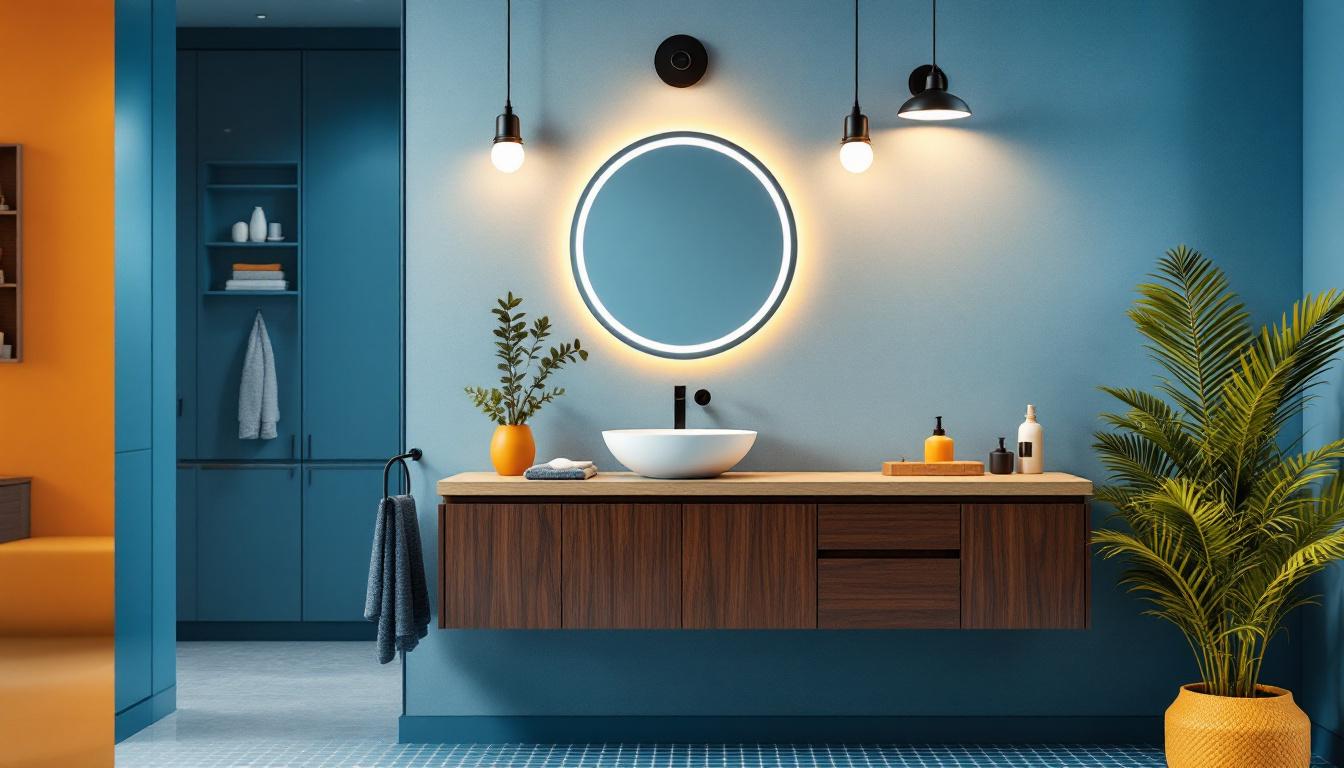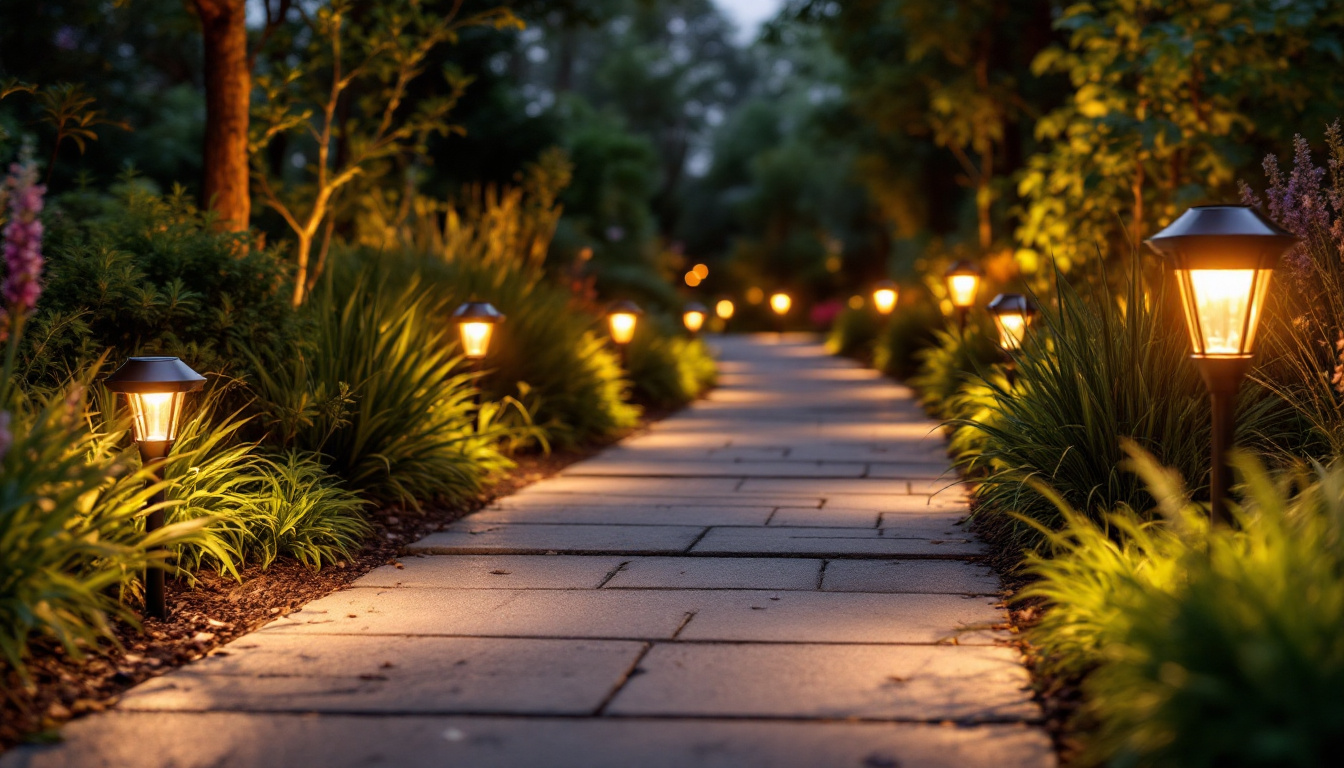
In the world of lighting design, understanding the nuances of different types of fixtures is essential for any contractor. Among these, vanity lights hold a unique place, especially in residential settings. This article aims to demystify vanity lighting, offering insights that lighting contractors need to enhance their projects and satisfy their clients.
Vanity lighting serves a specific purpose in homes, primarily in bathrooms and dressing areas. Its primary function is to provide adequate illumination for grooming tasks, such as shaving, applying makeup, or styling hair. However, the aesthetics of vanity lights also play a crucial role in the overall design of a space. The right lighting can enhance the beauty of the room, create a welcoming atmosphere, and even influence the mood of the person using the space. Therefore, selecting the appropriate vanity lighting is not just about functionality; it’s also about complementing the interior design and personal style of the homeowner.
There are several types of vanity lights available, each designed to meet different needs and preferences. These include wall-mounted sconces, illuminated mirrors, and overhead fixtures. Understanding the characteristics of each type can help contractors make informed decisions based on their clients’ requirements. For instance, wall-mounted sconces can be found in a variety of styles, from traditional to contemporary, allowing homeowners to express their personal taste. Meanwhile, illuminated mirrors not only serve a practical function but also act as a stylish focal point in the room, often featuring LED technology for energy efficiency and longevity.
Wall-mounted sconces are popular for their versatility. They can be installed at various heights and positions, allowing for tailored lighting solutions. Illuminated mirrors, on the other hand, offer a sleek and modern look while providing direct light for grooming tasks. Overhead fixtures, such as chandeliers or flush mounts, can add a touch of elegance to a bathroom, but may not provide the focused light needed for detailed tasks. When selecting overhead fixtures, it’s essential to consider the overall lighting scheme of the bathroom, ensuring that they complement other light sources and enhance the room’s ambiance.
The placement of vanity lights is critical for achieving optimal functionality and aesthetics. Typically, lights should be positioned at eye level to minimize shadows on the face. For wall sconces, a height of 65 to 70 inches from the floor is generally recommended. However, this can vary depending on the height of the vanity and the preferences of the user. Additionally, the color temperature of the bulbs used can significantly impact how colors appear, particularly for makeup application. A warmer light can create a cozy atmosphere, while a cooler light can provide a more clinical feel, which may be preferable for detailed grooming tasks.
In addition to height, the spacing between fixtures is also important. When using two sconces, they should be placed 28 to 36 inches apart, ensuring even illumination. For overhead fixtures, consider the size of the vanity and the overall scale of the bathroom to determine the appropriate fixture size and placement. Furthermore, incorporating dimmable options can enhance the versatility of vanity lighting, allowing users to adjust the brightness according to their needs, whether it’s for a bright morning routine or a relaxing evening soak. Thoughtful consideration of these elements can transform a simple bathroom into a well-designed and functional space that caters to both style and practicality.
The type of bulbs used in vanity lighting can significantly impact both functionality and ambiance. Lighting contractors must be aware of the various options available and their respective advantages and disadvantages.
LED bulbs have gained popularity in recent years due to their energy efficiency and longevity. They produce less heat and consume significantly less power compared to incandescent bulbs. Additionally, LED technology has advanced to offer a wide range of color temperatures, allowing for customization to suit different styles and preferences. Many LED options now come with dimmable features, providing even more versatility in creating the desired atmosphere, whether for a bright morning routine or a relaxing evening soak.
On the other hand, incandescent bulbs provide a warm, inviting glow that many homeowners still prefer. They are often favored for their ability to render colors accurately, making them ideal for tasks requiring precision, such as makeup application. However, their shorter lifespan and higher energy consumption make them less desirable in the long run. It’s also worth noting that incandescent bulbs can be more affordable upfront, but the cost of replacement and energy use over time can add up significantly. As such, homeowners should weigh both initial costs and long-term savings when making their selection.
Color temperature is another crucial factor to consider when selecting bulbs for vanity lighting. Measured in Kelvin (K), the color temperature can influence the mood and functionality of a space. For vanity lighting, a range of 2700K to 3000K is typically recommended, as it provides a warm light that is flattering for skin tones. This warmth can enhance the overall aesthetic of a bathroom or dressing area, making it feel more inviting and comfortable for daily routines.
Furthermore, the Color Rendering Index (CRI) is an essential metric to evaluate. A higher CRI indicates that colors will appear more vibrant and true to life under the light. For vanity lighting, a CRI of 90 or above is ideal, ensuring that users can accurately assess their appearance. This is particularly important for tasks such as applying makeup or styling hair, where accurate color perception is crucial. Additionally, some manufacturers now offer bulbs specifically designed for beauty applications, which combine high CRI ratings with optimal color temperatures to create a lighting environment that mimics natural daylight, further enhancing the experience.
Staying updated on design trends is vital for lighting contractors looking to impress clients. Vanity lighting has evolved significantly, with new styles and technologies emerging regularly. Understanding these trends can help contractors offer innovative solutions that meet modern aesthetic demands.
One of the most prominent trends in vanity lighting is the shift towards minimalist and modern designs. Clean lines, geometric shapes, and understated elegance characterize this style. Fixtures made from materials such as brushed nickel, matte black, or polished chrome are particularly popular, as they can seamlessly integrate into various bathroom styles.
In addition to aesthetics, modern designs often incorporate energy-efficient technologies, such as integrated LED lighting. This not only enhances the visual appeal but also aligns with the growing demand for sustainable solutions in home design.
Conversely, vintage and industrial styles have also seen a resurgence in popularity. These designs often feature exposed bulbs, rustic finishes, and unique materials, creating a warm and inviting atmosphere. Contractors should be prepared to offer a range of options, from antique brass fixtures to Edison-style bulbs, to cater to clients who prefer a more eclectic look.
Proper installation of vanity lighting is crucial for ensuring functionality and safety. Lighting contractors must adhere to best practices to avoid common pitfalls and deliver high-quality results.
Before installation, it is essential to assess the existing electrical setup. Ensure that the circuit can handle the wattage of the new fixtures and that all wiring is up to code. If necessary, consult with a licensed electrician to address any concerns.
Additionally, consider the placement of switches. Installing dimmer switches can provide clients with greater control over the ambiance, allowing them to adjust the lighting based on their needs. This feature is particularly beneficial in bathrooms, where different tasks may require varying levels of illumination.
When mounting fixtures, ensure that they are securely fastened to the wall or ceiling. Use appropriate anchors and hardware to prevent fixtures from becoming loose over time. This is especially important for heavy fixtures, which may require additional support to ensure stability.
Also, take care to align fixtures properly for a polished look. Misaligned lights can detract from the overall aesthetic and may leave clients dissatisfied with the final result.
Once vanity lighting is installed, maintenance becomes a key consideration for both contractors and homeowners. Educating clients on proper care can help prolong the life of the fixtures and maintain their appearance.
Regular cleaning is essential to keep vanity lights looking their best. Dust and grime can accumulate on fixtures and bulbs, reducing their effectiveness and altering the quality of light. Contractors should recommend using a soft, damp cloth to wipe down surfaces, avoiding harsh chemicals that could damage finishes.
For fixtures with glass shades, periodic removal and cleaning can help maintain clarity and brightness. Clients should be advised to turn off the power before cleaning to ensure safety.
Over time, bulbs will need to be replaced, and fixtures may require updates due to changing styles or technologies. Contractors should provide guidance on when and how to replace bulbs, emphasizing the importance of selecting the right type and wattage to maintain performance.
Additionally, staying informed about new lighting technologies and styles can help contractors offer valuable advice to clients looking to refresh their spaces. Regularly updating knowledge in this area can position contractors as trusted experts in the field.
Vanity lighting is a critical component of residential design, requiring a blend of functionality and aesthetics. By understanding the various types of fixtures, the importance of placement, and the latest trends, lighting contractors can elevate their projects and meet the diverse needs of their clients.
From selecting the right bulbs to ensuring proper installation and maintenance, contractors play a pivotal role in the success of vanity lighting projects. By staying informed and adaptable, they can navigate the evolving landscape of lighting design and continue to deliver exceptional results.
Ready to take your vanity lighting projects to the next level? At LumenWholesale, we provide lighting contractors with an exceptional range of high-quality, spec-grade lighting products at prices that can’t be beaten. Say goodbye to local distributor markups and hello to our direct-to-contractor wholesale pricing. Our extensive selection not only meets but exceeds industry standards, ensuring your projects shine with reliability and performance. Plus, with free shipping on bulk orders, you can stock up on premium lighting solutions without worrying about hidden costs. Elevate your lighting game and give your clients the best value by choosing Wholesale Lighting at the Best Value with LumenWholesale.

Discover the secrets lighting contractors use to transform ordinary mailboxes into stunning solar-lit features.

Discover how LED Lights 4 is transforming the lighting industry with real-world success stories from contractors.

Discover the common pitfalls lighting contractors face with solar outdoor pathway lighting and learn how to avoid them.

Discover the essentials of handheld UV technology in the lighting industry with our comprehensive guide for contractors.